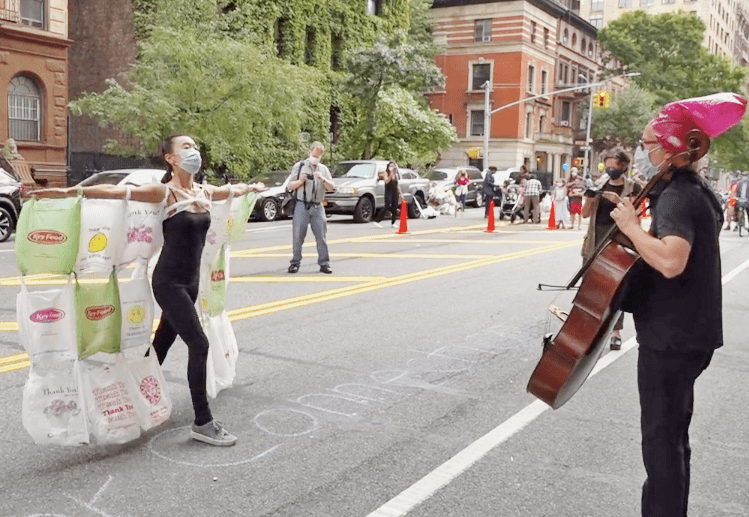Upper West Siders got a taste of what residents of Jackson Heights have been experiencing all summer, thanks to community activists who turned one of Mayor de Blasio's under-used and poorly conceived open streets into a community center that shows a way forward for a car-light city.
On Thursday, members of City Rise, Streetopia UWS, and a political candidate or two took a three-block segment of the 10-block West End Avenue "open street" to show what happens when a roadway is truly reclaimed from drivers. Up to this point, West End Avenue has not been transformed into a vibrant neighborhood hub mostly, residents say, because its wide design still encourages drivers to seize the space and to exceed the 5 mph stated speed limit.
All of that changed once the groups set out stronger barricades and created grassy areas for kids to play, an area for open-air concerts and dance, and even an outdoor "classroom."
"People were using it a bit, but it wasn't so exciting — it was feeling a little empty, so we just activated it with all this fun stuff," said Upper West Side City Council candidate Sara Lind.
Story continues after the movie version here:
Judy Sperling's Time Lapse Dance troupe did a spell-binding routine with costumes and props all fashioned from plastic shopping bags (um, whatever happened to the ban on them?).
"We need to completely reimagine our streetscape so people will want to come to and where we can gather for performance and celebrate the culture and all the things that make our city great," she said.
The event between 90th and 93rd streets also functioned as a demonstration of a "bike boulevard concept" that will be pushed further by City Rise and Streetopia UWS. The concept calls for deterring car traffic by creating 5 mph shared-space style roadways with two or three chicanes or "bulb-outs" on every block to force drivers to go slowly.
The concept would not be ideal on West End Avenue — but that's the point of the demonstration, said Lisa Orman of Streetopia UWS.
"This neighborhood has so many cross streets that could be turned into shared-space bike boulevards to connect Central and Riverside parks," she said.
The larger point of the demonstration was to remind DOT that not all open streets are created equal. Some, like West End Avenue or Parkside Avenue in Brooklyn, were poorly conceived because they are too critical for car drivers and too wide to give residents a feeling of security.
"Drivers weren't respecting this open street, so people weren't using it that much," Orman said. "So many people told me that this event was the first time they have used the open street this summer because it was finally activated with people."
The event was a one-off because the city requires street activity permits, even on open streets, though residents of 34th Avenue in Jackson Heights have been doing Zumba classes and pot-luck dinners without much controversy.
And that's the point of having an open street in the first place, said Jennifer Nitzky of the American Society of Landscape Architects.
"It's important to have public spaces on every block in every community for quality of life and also for health and wellness," she said.
The Upper West Side is the latest neighborhood to demonstrate that many open streets should be permanent. Council Member Danny Dromm has asked the city to do so on 34th Avenue, and the Meatpacking Business Improvement District turned a roadway into a park with just a little sod and a lot of imagination.






